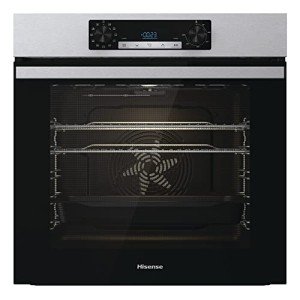You’ll Be Unable To Guess Oven For Kitchen’s Benefits

Choosing the Right Oven for Your Kitchen: A Comprehensive Guide
Ovens have been a cornerstone of culinary endeavors for centuries, providing an essential home appliance for both amateur cooks and professional chefs alike. As contemporary cooking areas progress, so too do the kinds of ovens offered, each developed to fulfill the varied requirements of cooking enthusiasts. The following guide supplies a detailed introduction of different oven types, their functions, and factors to consider to remember when choosing the best oven for your kitchen.
Kinds of Ovens
When thinking about an Oven For Kitchen for your kitchen, it is essential to understand the numerous types offered. Each kind of oven has unique characteristics that can influence cooking techniques and overall kitchen performance.
1. Traditional Ovens
Conventional ovens are the most basic type, typically discovered in homes all over the world. They typically utilize either gas or electric power and offer an uncomplicated cooking approach.
- Gas Ovens: Utilize gas or gas, providing instant heat and outstanding temperature level control.
- Electric Ovens: Use electric coils or a heating aspect, frequently offering more even heat circulation.
2. Convection Ovens
Stove are created with a built-in fan that distributes hot air around the food, leading to much faster cooking times and more even results.
- Advantages:
- Reduced cooking times (as much as 25% faster)
- Even baking and browning
- Drawbacks:
- May need changes to dishes (lower temperature level or shorter time)
3. Wall Ovens
Wall ovens are a popular choice in contemporary kitchen areas, as they can be installed at eye level, conserving counter area and increasing ease of access.
- Single Wall Ovens: Ideal for smaller sized kitchens, suitable for daily cooking.
- Double Wall Ovens: Increase capacity for big meals and several dishes.
4. Range Ovens
Range ovens integrate both a cooking range (with burners) and an oven, offering a compact option for kitchens with minimal space.
- Freestanding Ranges: Standalone units that can fit into any kitchen design.
- Slide-in Ranges: Designed to fit snugly in between cabinets for a more integrated look.
5. Steam Ovens
Steam ovens utilize steam rather of dry heat, protecting wetness and nutrients in food.
- Advantages:
- Healthier cooking alternative
- Ideal for baking bread and cooking veggies
- Factors to consider:
- May need additional steps for particular meals
Secret Features to Consider
When picking an oven, consider the following features that can enhance cooking experiences:
| Feature | Description |
|---|---|
| Size | Guarantee it fits your kitchen space and fulfills your cooking requires. |
| Self-Cleaning | Makes upkeep easier, eliminating the need for manual scrubbing. |
| Smart Technology | Ovens with Wi-Fi connection can simplify cooking through apps. |
| Temperature Range | A larger range can boost cooking flexibility. |
| Safety Features | Functions such as vehicle shut-off can boost kitchen security. |
Tips for Choosing the Right Oven
Choosing the ideal oven can often be an overwhelming task. Here are numerous pointers to streamline the procedure:
-
Identify Your Cooking Habits: Consider how often you cook and the types of meals you prepare. For example, avid bakers may prefer a stove for even baking, while those who cook roasts may lean towards a standard oven.
-
Procedure Your Space: Before making a purchase, determine the area where the oven will be put to guarantee it fits comfortably with your kitchen style.
-
Consider Your Budget: Ovens range commonly in price. It is essential to set a budget and consider the long-term value of the home appliance.
-
Read Reviews: Online evaluations can offer insight into a design’s efficiency and dependability gradually.
-
Check Energy Ratings: Energy-efficient designs can save you money on utility bills in the long run.
Maintenance and Care
To make the most of the life expectancy of your oven, proper upkeep is key. Follow these simple actions:
- Regular Cleaning: Make cleaning up a routine after each use, and use self-cleaning functions when available.
- Examine Seals: Ensure that the door seals securely; this avoids heat loss during cooking.
- Calibration: Periodically inspect the oven temperature level for precision. An oven thermometer can aid with this.
- Professional Servicing: Schedule regular upkeep consult an expert to guarantee the appliance runs effectively.
FAQs
What is the best type of oven for a little kitchen?
For little kitchen areas, wall ovens or compact range ovens are exceptional choices as they take up less space and can be set up to fit into available cabinetry.
How do I keep a gas oven?
Frequently examine the burners for blockages and make sure that the oven’s interior is cleaned to prevent buildup from spills and splatters.
Can I bake and broil in the same oven?
Yes, most modern ovens permit for both functions. Check the user handbook for specific guidelines on operating your oven.
What should I do if my oven isn’t heating correctly?
First, inspect if it’s effectively plugged in or if the gas is flowing. If problems continue, consult a technician to diagnose possible problems.
Is it worth purchasing a wise oven?
If cooking convenience and the most recent innovation appeal to you, buying a smart oven can be beneficial, as they provide a range of improved cooking features.
Choosing the right oven for your kitchen is important to both the functionality and satisfaction of your cooking experience. By considering the various kinds of ovens, vital features, and upkeep pointers, consumers can make an informed choice that fulfills their culinary requirements and preferences. Whether you are a casual cook or an enthusiast, the right oven can substantially elevate your cooking experiences.


